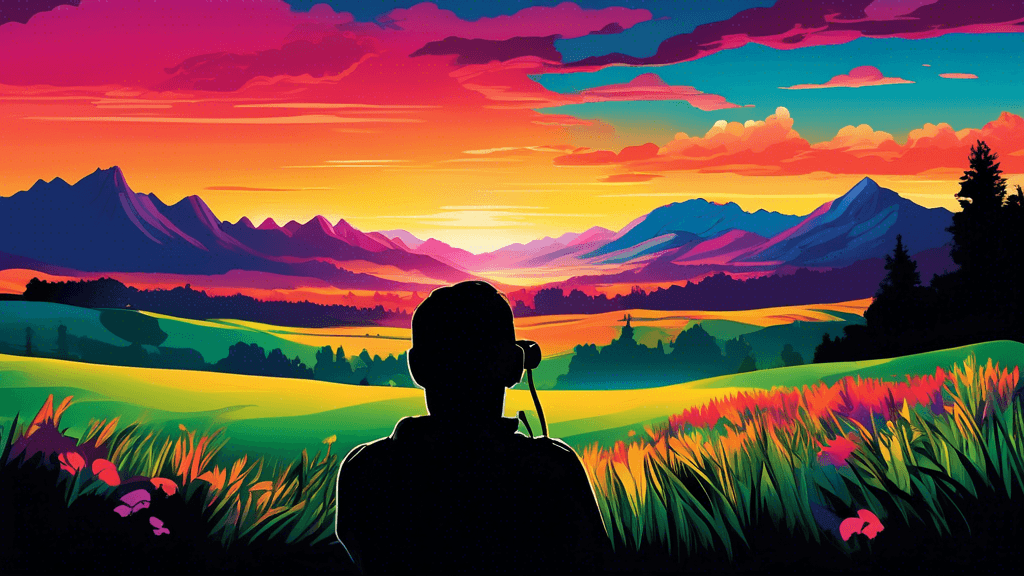
Capturing Narratives: Mastering the Art of Landscape Photography
Share
The Essence of Landscape Photography
Landscape photography is more than just taking pictures of scenic views. It's an art form that requires an understanding of natural lighting, patience, and a keen eye for detail. This genre of photography allows us to capture the essence of the environment, preserving powerful moments in time that tell their own unique stories. Whether you're a professional photographer looking to enhance your skills or a hobbyist wanting to deepen your connection with nature, mastering landscape photography can be a profoundly rewarding endeavor.
Understanding the Fundamentals
Composition and Framing
Success in landscape photography begins with mastering composition and framing. The rule of thirds, leading lines, and the inclusion of natural elements like trees or water can add depth and interest to your photos. Consider the following points:
- Divide your frame into nine equal parts and position your main subject off-center for a more engaging composition.
- Use leading lines, such as roads or rivers, to draw the viewer’s eye into the photograph.
- Incorporating foreground, midground, and background layers helps to create a sense of depth.
Lighting
Understanding natural lighting is crucial in landscape photography. The golden hour—shortly after sunrise or before sunset—offers soft, warm lighting that can dramatically enhance your landscape photos. Conversely, the blue hour, which occurs just before sunrise and just after sunset, provides a cooler, ethereal light. Renowned landscape photographer Ansel Adams once said, A good photograph is knowing where to stand. This is particularly true in how you use light to shape and define the landscapes you are capturing.
Advanced Techniques
Long Exposure
Long exposure is a popular technique in landscape photography that involves using a longer shutter speed to capture the movement within the frame. This can be used to blur moving water or clouds and create a surreal effect that emphasizes time passing. A sturdy tripod and a remote shutter release can help ensure sharpness in your photos where needed.
High Dynamic Range (HDR) Imaging
HDR imaging can be particularly useful in landscape photography to manage high contrast scenes. By combining multiple photographs taken at different exposure levels, you can create a single image that reveals greater detail in both the shadows and highlights. Professional photographers often use HDR to cope with challenging lighting situations without sacrificing detail.
Choosing the Right Gear
While the photographer's skill is paramount, having the right gear can help significantly. A DSLR or mirrorless camera capable of manual settings is essential. Here are a few additional pieces of equipment to consider:
- A wide-angle lens is ideal for capturing expansive landscapes.
- A telephoto lens can be useful for highlighting distant details that might otherwise go unnoticed.
- Filters, such as neutral density or polarizing filters, can help you manage reflections and improve color saturation.
- A sturdy tripod is crucial for stability, especially when working with long exposures.
Preserving Nature Through Photography
As landscape photographers, we hold a responsibility not only to capture the beauty of nature but also to preserve it. Following ethical practices while shooting—such as staying on trails, not disturbing wildlife, and packing out trash—ensures that our impact on the environment is minimal. In the words of famous conservationist John Muir, Take nothing but pictures, leave nothing but footprints, kill nothing but time.
Connecting With Your Audience
Ultimately, the goal of landscape photography is to connect with your audience on a deep level. Your images should not only showcase the beauty of a landscape but also evoke emotion and provoke thought. Share stories behind your photos, the challenges you faced, and the lessons you learned to increase engagement and provide value to your viewers.
Conclusion
Landscape photography is a powerful medium through which we can convey the majesty and fragility of our natural world. It encourages both the photographer and the viewers to reflect on their relationship with the environment, promoting a greater appreciation and urge for conservation. So, grab your camera, respect the environment, and start capturing the narratives that nature unfolds. As you do, remember that each shot contributes to the greater story of our planet.
Are you ready to explore the world through your lens and share its stories? Venture out, focus on your craft, and witness how your photography can make a difference!





